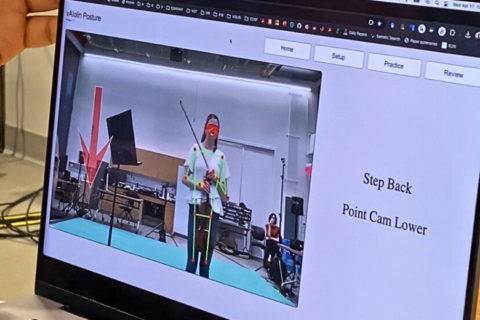This article was republished with permission from WTOP’s news partners at Maryland Matters. Sign up for Maryland Matters’ free email subscription today.
This article was written by WTOP’s news partners at Maryland Matters and republished with permission. Sign up for Maryland Matters’ free email subscription today.
The planning agency that serves Montgomery and Prince George’s counties on Wednesday formally rejected the state’s plan for widening the Capital Beltway (I-495) and Interstate 270.
The Maryland-National Capital Park and Planning Commission vote was unanimous.
Because the commission is a “cooperating agency” in the formal process for obtaining needed land and environmental permits, the vote is a potential complicating factor for the state’s push to add four “express toll lanes” to the two highways.
“The state’s project team is still not delivering on what it promised with the assessment and analysis phase of this project,” said M-NCPPC Chairman Casey Anderson in a statement following the vote.
“We cannot agree with the direction of the Managed Lanes Study until our land use, transportation, and environmental concerns are addressed, and that just hasn’t happened despite months of trying to get answers,” he added.
In addition to representing the commission’s formal response to the draft EIS, the comments also go to the Maryland Department of the Environment and the U.S. Army Corps of Engineers, both of which must approve key permits for the project to move forward.
For years, planning staffers in the two counties have raised concerns and objections about the Hogan administration’s plan to add capacity to I-495 and I-270, and those objections formed the basis for the commission’s letter.
“As the regional planning agency and the steward of the natural and built environments in Montgomery and Prince George’s Counties, M-NCPPC is responsible for making well-reasoned and informed decisions with regard to any impacted parkland, including the cultural and historic resources held in trust for the residents of both Counties,” said M-NCPPC Vice-Chair Elizabeth M. Hewlett in a statement.
The Maryland Department of Transportation is expected to select a final design for the project next May. The commission’s objections will likely form the basis of a legal challenge to the state’s decision, lawyers familiar with the National Environmental Policy Act said.
In addition, the state is likely to need parkland controlled by the MNCPPC, some of which was transferred to the counties from the federal government under conditions imposed by the Capper-Cramton Act, a 1930 law governing the use of parkland in the Washington, D.C., region. The agency could use its objections to the project as a basis for refusing to transfer that acreage to the state, experts have said.
The commission’s lead planner on the project, Carol S. Rubin, expressed hope that the agency’s response will bring state and local planners closer together.
“Our comments are to identify those areas of concern and hopefully it will move the needle a little bit with State Highway to negotiate with us and discuss what our concerns are, and hopefully address those concerns as the project moves forward,” she told the eight-member commission Wednesday.
“We have hundreds of technical comments,” she added. “And the State Highway Administration is obligated under law to address and respond to each of the comments that we make.”
The commission’s response to the DEIS contained many of the objections it has communicated for months, among them:
- The state failed to adequately consider an agency-supported proposal to lure motorists onto the under-utilized InterCounty Connector, relieving traffic on the most congested portions of the Beltway
- The DEIS doesn’t offer a complete mitigation plan for the environmental impacts of the project because the State Highway Administration didn’t fully catalogue them, nor does it properly catalogue the impact on historic sites
- The state has failed to indicate how it will compensate the agency for parkland taken to widen the highways
- The DEIS fails to describe the impact on socially-disadvantaged communities in the path of the project
- The state’s stormwater management plan is “insufficient”
- The state fails to maximize the use of transit and take other steps to reduce travel demand
The public comment period on the draft EIS runs until Nov. 9.
Montgomery County Executive Marc B. Elrich (D) and Prince George’s Executive Angela D. Alsobrooks (D) are expected to file formal comments against the project in the coming days, as are the Montgomery and Prince George’s County Councils. A draft of a letter to state Transportation Secretary Greg Slater from Alsobrooks and Prince George’s County Council Chairman Todd Turner (D) lays out county leaders’ numerous concerns about the highway widening.
“Significant questions remain concerning the financial cost and impacts of the project,” they write.







